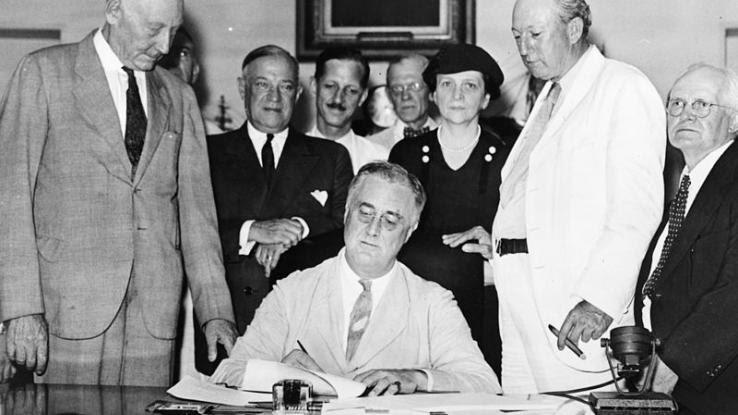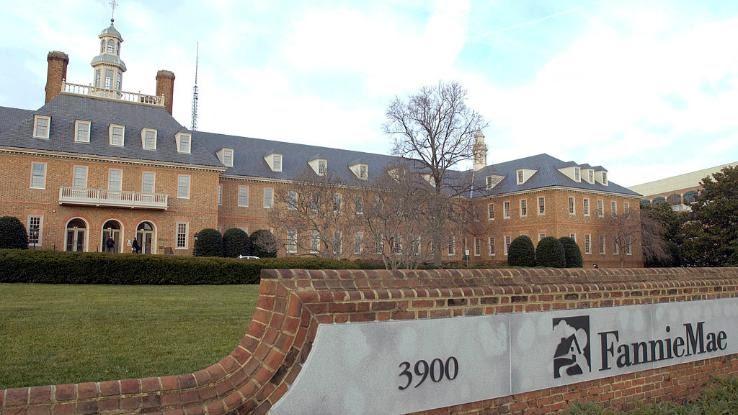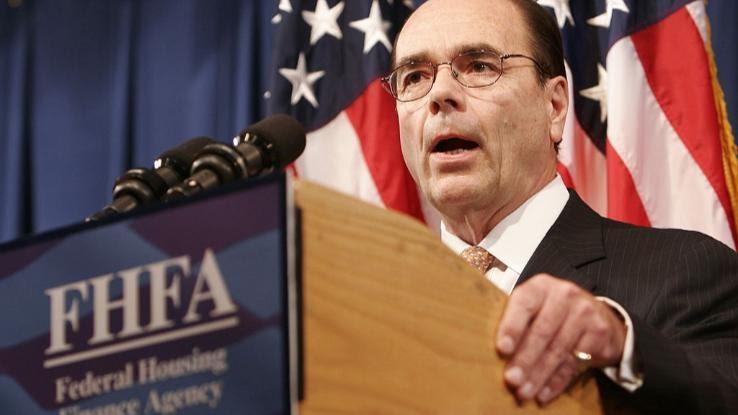Who Do I Contact for Fannie Mae Foreclosed Multi-family Properties

Whether you're starting the procedure of mortgage shopping in your quest for a new home or you've watched your fair share of news reports about the economy, y'all've likely heard of Freddie Mac and Fannie Mae. Their names don't give away as well much, though, so what exactly are these financial entities, why were they created and what's the difference betwixt them?
While neither Fannie Mae or Freddie Mac directly loan mortgage money to borrowers, they serve an important role in working with banks that practice. We'll break down everything y'all demand to know about both of these enterprises and the differences in mortgages that each ane of them backs.
What Are Fannie Mae and Freddie Mac?
While Fannie Mae and Freddie Mac are unlike entities, they were both created by Congress to help stabilize the U.S. housing market place while it was suffering the economic effects of the Great Depression. The idea behind both was to help ensure that there would always be plenty affordable liquidity (funding) for the many banks and other mortgage lending companies beyond the visitor to lend to borrowers. In essence, these entities were created to help make it easier for borrowers from unlike financial backgrounds to obtain mortgages and achieve the dream of home ownership.

Fannie Mae, or the Federal National Mortgage Association, was offset established in 1938 afterwards the Great Depression had devastated the finances of borrowers and lenders across the land. In an attempt to assist Americans get back on track towards stability, President Franklin D. Roosevelt and Congress chartered Fannie Mae to buy Federal Housing Assistants (FHA) mortgages from lenders.
The banks and other lenders could then utilise the money they received to outset offering loans to more borrowers. But what did Fannie Mae do with the mortgages it bought? It arranged them into something called mortgage-backed securities (MBS) and sold them to investors like hedge funds, pensions and even individual investors.
When investors bought into an MBS, they essentially bought parts of the loans themselves, which allowed the investors to turn a profit in much the aforementioned manner that mortgage lenders did from interest payments. The upside, of class, was that they were able to enjoy payments from loans that had already been extended to borrowers by other financial institutions.
Fannie Mae was funded past Congress until 1968, when the regime needed the growing amount of money information technology had been diverting to Fannie Mae to fund the Vietnam War instead. At that betoken, the government immune Fannie Mae to become a publicly traded visitor and brainstorm selling shares on the stock marketplace.

Even though the government largely stepped out of the picture equally investors began purchasing shares, information technology yet backed Fannie Mae as a company, which meant that all of Fannie Mae's loans were guaranteed by the government. At this bespeak, Fannie Mae was no longer limited to FHA-backed mortgages but became complimentary to buy other types of mortgages equally well.
Freddie Mac — officially known as the Federal Home Loan Mortgage Corporation — came into existence in 1970, when Congress created it nether the Emergency Home Finance Act. The concept was similar to that of Fannie Mae, in that it, too, bought mortgages from lenders so that the lenders could make more loans.
In office, Freddie Mac was created to expand the secondary mortgage market, but information technology was also meant to keep Fannie Mae from becoming a monopoly. In 1989, Freddie Mac likewise went public and became a shareholder-owned company under a Congressional charter.
The primary difference betwixt the two entities is that Fannie Mae focuses on purchasing mortgages from big retail or commercial banks, while Freddie Mac buys them from smaller community banks or savings-and-loan associations. While they both exist to make home-buying more accessible to a wider range of borrowers and to provide stability in the lending market place, the mortgage loans they purchase come from different sources. Fannie Mae and Freddie Mac also offer different programs to people who can only beget to make lower downwardly payments.
The Great Recession Hits the U.Southward. Economy — and Fannie and Freddie
To a big extent, the idea backside Fannie Mae and Freddie Mac did a lot of good when information technology came to the U.S. housing market and the goal of improving access to loans for borrowers who didn't meet traditional mortgage requirements. Yet, the trouble, some argued, was that even though neither entity was necessarily a monopoly, the combination of the ii became ane. The fact that they're allowed to borrow money from the authorities at a lower rate than almost whatever other business concern in the industry has as well caused people to argue that these entities have an unfair advantage that'south led to the collapse of smaller companies.

By 2009, 90% of all mortgages in the United States were backed by either Fannie Mae, Freddie Mac or the Federal Home Loan Bank Organization (FHLB) — a grouping of 11 authorities-sponsored financial institutions. Banks were hesitant to give out loans without backing from these entities because they carried "an implicit regime guarantee," meaning people didn't think the U.South. government would let them to neglect. Thus, there was a perceived college level of security and stability to a Fannie- or Freddie-backed loan.
Both companies were thrust into the spotlight during the housing crisis of 2008, when they ended up losing a great deal of money by bankroll high-take chances loans. Because of their close human relationship with the government, notwithstanding, they had literally become "too large to fail" — allowing them to go nether could've triggered a financial disaster of global proportions.
They ultimately received a massive $191 billion bailout from the regime, simply not without repercussions. The U.Due south. Treasury Department now owns $100 billion of their preferred stock and mortgage-backed securities, and they operate under government conservatorship with the Federal Housing Finance Agency (FHFA). All of the profits these shares receive are now deposited into the full general treasury.
Additional Differences Between Fannie and Freddie
While there are several primal similarities in mortgage loans backed past both Fannie Mae and Freddie Mac, at that place are also a few differences when information technology comes to what kind of loans they guarantee. For instance, Fannie Mae backs a HomeReady loan, which requires the borrower to have an income that's no more than the 80% average in the expanse they live in. It also offers a Standard 97% loan, however, that doesn't accept any income restrictions just is intended for first-fourth dimension buyers.

Freddie Mac's Domicile Possible loan, on the other hand, is available to those with a maximum 100% median expanse income or those who plan to purchase in "underserved" areas. All borrowers for this type of loan must also alive on the holding they plan to purchase, whereas Fannie Mae's like loan only requires the borrower to live in the home if they make a down payment of less than v%.
The other differences are mostly behind-the-scenes guidelines that bargain with unlike minimum downwards payments on fixed-rate loans and adaptable-rate mortgages. These differences also include home disinterestedness requirements for borrowers who are interested in a greenbacks-out refinance for their primary residence.
Keep in mind that neither Fannie Mae or Freddie Mac really directly makes loans to lenders. Instead, they buy these loans from approved financial institutions. The differences in their programs are important if you're interested in borrowing from a lender that's backed by 1 or the other. Finding a lender that'southward backed past one of these two programs can have advantages, as neither tends to do business with unreliable lenders that might endeavor to take advantage of their customers.
parkercolowerve94.blogspot.com
Source: https://www.reference.com/business-finance/differences-fannie-mae-freddie-mac?utm_content=params%3Ao%3D740005%26ad%3DdirN%26qo%3DserpIndex
0 Response to "Who Do I Contact for Fannie Mae Foreclosed Multi-family Properties"
Post a Comment